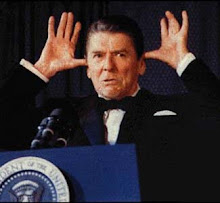
70 years later, and the night of broken glass has not lost it's power to horrify.
Nearly a hundred people killed, and nearly 30,000 arrested and sent to concentration camps. In one night.
70 years, and the horror of the first Nazi pogrom against the Jews still makes news. Less than two weeks ago, loot was found. In a German dump:
KLANDORF, Germany – Yaron Svoray scrapes caked layers of dirt from a shard of glass, revealing a sunflower at the heart of a Star of David.
He carefully turns it, speculating it may have been a bowl used for Passover ceremonies in pre-World War II German Jewish homes.
The fragment is one of a handful of artifacts Svoray has pulled from mounds of debris in this former dump about an hour north of Berlin that locals say was used by the Nazis to deposit rejected loot from the 1938 pogrom known as Kristallnacht, or "The Night of Broken Glass."
The responsibility for Kristallnacht went all the way to the top:
It had never been in doubt that the Nazi propaganda machine fuelled the Night of Broken Glass but now a German scholar has uncovered strong evidence that on the night of Nov 9 the Fuhrer led Nazis to destroy an important synagogue, deliberately throwing a match into a tinderbox.
On November 7, 1938, Jewish teenager Herschel Grynszpan walked into Germany's embassy in Paris and shot dead diplomat Ernst vom Rath, sparking the Night of Broken Glass, the most ferocious single pogrom of the Nazi era.
....
Angela Hermann, an historian at Munich's Institute for Contemporary History, has decoded a mysterious passage in the diary of Hitler's propaganda minister Joseph Goebbels that had stumped scholars ever since this section of Goebbels' diaries was retrieved from Moscow in 1992.
"We have real evidence now that Hitler pulled the strings, that he personally directed the Kristallnacht," Dr Herman said, using the German name for the notorious night.
....
Goebbels then wrote: "Hitler's Stosstrupp goes out immediately to clean up Munich ... and a synagogue is smashed."
This had historians puzzled, as there was no force known as ''Hitler's Stosstrupp'' in 1938. By digging through Munich archives, Dr Hermann found letters and documents to show that the term referred to the veterans of Hitler's failed attempt to seize power in 1923, known as the Beer Hall Putsch.
These old street fighters remained loyal to Hitler, taking orders from no one else. Dr Hermann found invitations and seating plans for the November 9 Town Hall rally that showed 39 of these old comrades sat at adjacent tables to Hitler. They included Hitler's chief adjutant Julius Schaub and chauffeur Emil Maurice. These were the same 39 men who later hit the streets and destroyed the Ohel Jacob synagogue that night, fanning the flames of an incendiary situation – on direct orders, Dr Hermann concludes, of Hitler himself.
There is a temptation to draw parallels to present times. And there are lessons to be learned as well. For now I'll just say this: never discount the efforts of domestic terrorists. Ever. And never believe them to be rehabilitated.


No comments:
Post a Comment